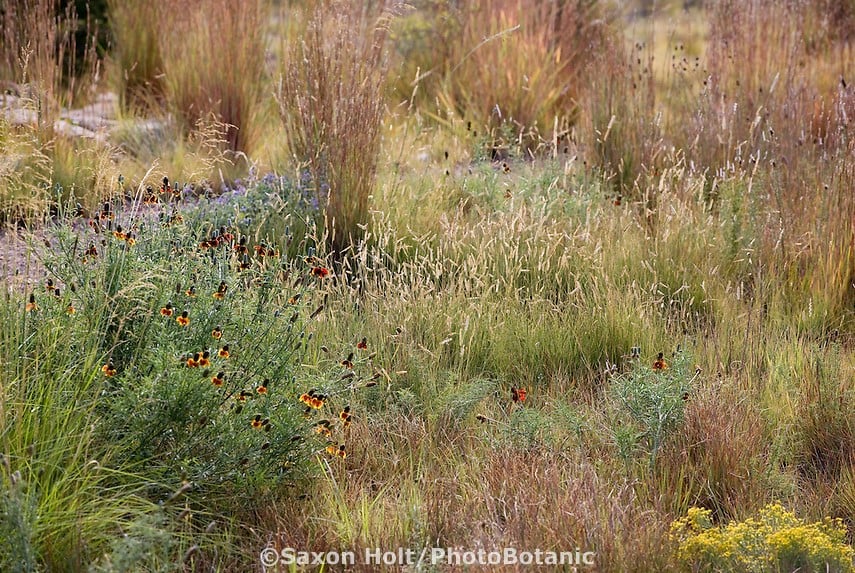
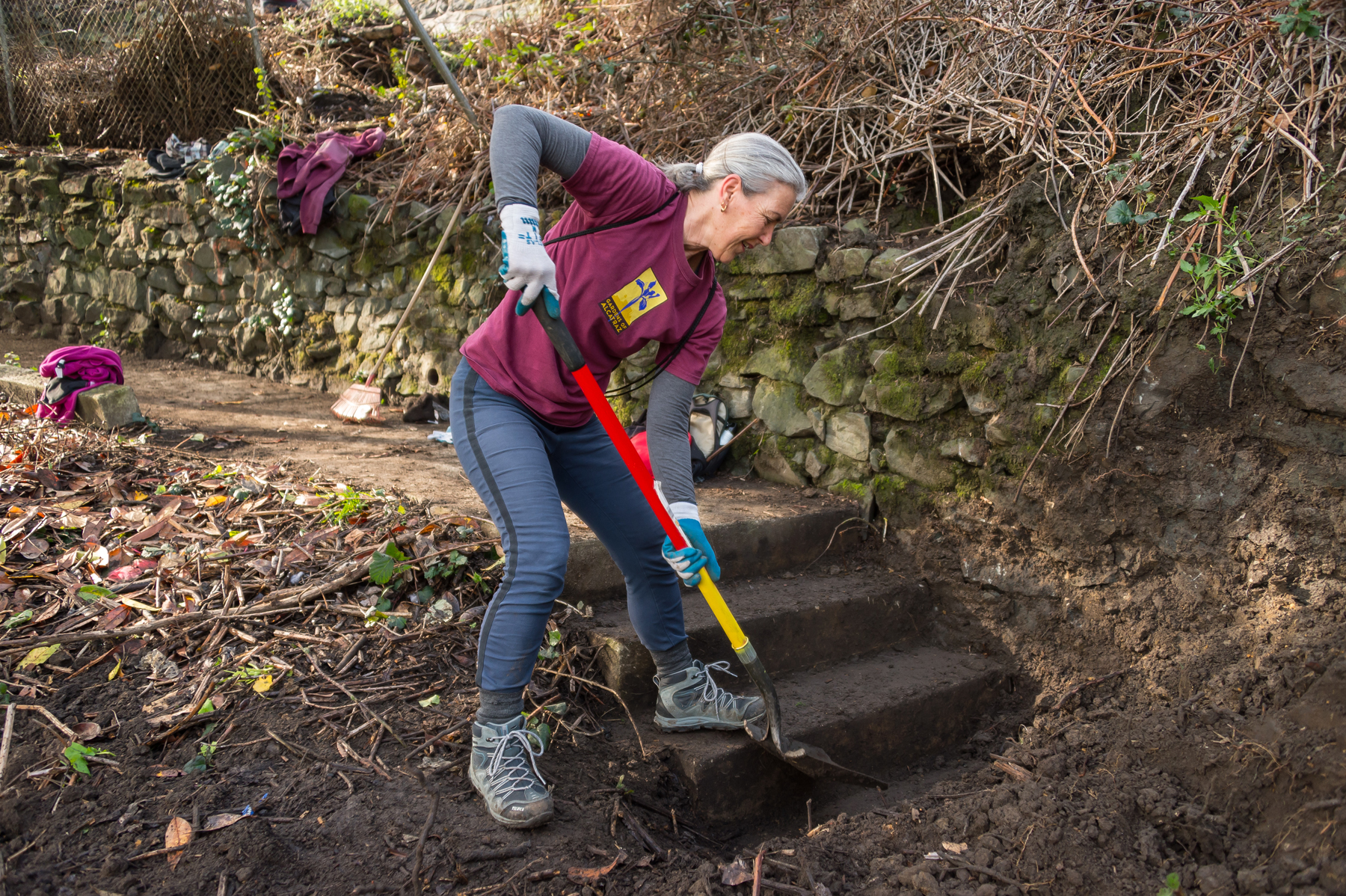
Contributor
- Topics: Archive, Inspired Gardens and Design

Almost like a more popular younger sister, the Gardens of Alcatraz were selected for a preservation project and have received all of the attention while the older Black Point Gardens across the Bay at Fort Mason, were ignored.
The Alcatraz project was the focus of a partnership in 2003 between the Golden Gate National Parks Conservancy (Parks Conservancy), the National Park Service (NPS), and the Garden Conservancy to restore the island gardens that were tended from the 1850s through to 1963. It was a leap of faith to take on the enormous task of clearing 40 years of overgrowth, rebuilding, replanting, and telling the story of the gardens, but the partners could see the garden’s potential through the weeds. Led by project staff, the Gardens of Alcatraz project was the first volunteer program to restore and steward a cultural landscape in the Golden Gate National Recreation Area (GGNRA). Now the NPS is aiming to duplicate the success and popularity of that program at the neglected Black Point Historic Gardens.
Where are the Black Point Gardens? This forgotten part of San Francisco’s waterfront is located at the base of Van Ness Avenue, on the steep east-facing bluff of Fort Mason overlooking Aquatic Park.
The two sister gardens are rooted together in history—both gardens were established in the 1850s, both housed military family residences, and both were tended by prison inmates. In fact, there was a time when army prisoners from Alcatraz were ferried over to work at Fort Mason during the daytime.
The NPS has long recognized the potential of the historic gardens at Black Point. Between 2004 and 2012 the Olmsted Center for Landscape Preservation produced the two-volume Cultural Landscape Report for Fort Mason. The first volume traced the physical history of Fort Mason with a focus on changes under the military. Volume II of the report focused on treatment strategies, in particular preservation and rehabilitation of the gardens at East Black Point, Fort Mason’s oldest developed landscape.
From the days of the Ohlone, the east-facing cove was protected from the westerly winds blowing in through the Golden Gate. Within this shelter, a bay-oak woodland thrived. Plants in this community included California bay laurel (Umbellularia californica), coast live oak (Quercus agrifolia), toyon (Heteromeles arbutifolia), California buckeye (Aesculus californica) and Pacific madrone (Arbutus menziesii). Seen against the surrounding light gray coastal scrub and sand dunes, the dark green of the mostly evergreen trees on the bluff gave the site its name of Black Point.
In 1776, Spanish colonized these lands and established the Presidio and a mission. In 1797 they built the Batteria San Jose at Black Point, recognizing its strategic location on a promontory overlooking a narrow part of the bay. Over the next 50 years, control of the region shifted from Spain to Mexico and then to the United States when California became a state in 1848. The United States military also recognized the defensive position of Black Point and took it over in 1850 for a military reservation called Point San Jose.

In 1848, gold was discovered in the Sierra Nevada foothills, bringing a rush of people that suddenly transformed San Francisco into a booming city. However, by the mid-1850s when the military still had not developed the land on the military reservation, two local real estate developers moved in and built five large private homes, selling them to prominent San Francisco residents. One of the town’s elite who took up residency was John C. Fremont and his wife Jessie Benton Fremont, who lived at Black Point between 1860 and 1861. The Fremonts moved back east with the start of the Civil War when John was appointed Commander of the Department of the West in 1861.
With the threat of Confederate ships along the Pacific, the military ramped up its presence and took possession of the grounds, evicting the residents. In 1882, the military post officially became known as Fort Mason and General Irwin McDowell lived in the largest home, today known as the General’s Residence. McDowell undertook landscaping projects to stabilize the sand dunes with vegetation and the landscape took on a more manicured look common to military landscapes.
The Fort Mason landscape underwent many changes over the years with encampments after the 1906 earthquake, the Panama Pacific International Exposition, WWI, WWII, and the eventual transition to being the Headquarters of the NPS in 1972. In 1972, the Officers’ Quarters on East Black Point was listed on the National Register of Historic Places.
Today, Fort Mason is the headquarters of the GGNRA. While lawn mowing and ornamental plantings are tended to by NPS, the hillside of East Black Point that was once gardened has been left on its own up until now. An uptick in criminal activities prompted NPS law enforcement to invest in clearing sightlines into the secluded and overgrown area.

Just like the Alcatraz project, the NPS and Parks Conservancy are dedicating staff to get the Black Point Historic Gardens project underway. Project Manager Diane Ochi of the Parks Conservancy is working with NPS Historical Landscape Architect Amy Hoke to bring these gardens back from more than 65 years of neglect. And just like the Gardens of Alcatraz project, there is a sense of urgency to save heirloom plants and reverse years of neglect.
The Cultural Landscape Report made treatment recommendations for addressing problems such as the loss of historic specimen trees, vegetation management, obstruction of historical views, and hazardous walkways. Current goals for Black Point are to restore the public walkways and open up views out to the Bay, and to replant the hillside with a mix of ornamental and native herbaceous plants. And, just like with the Gardens of Alcatraz, the desire is to balance natural and cultural resources, interpret the gardens for visitors’ experience, and devise ways to involve the community.

As with any new project, coming up with ways to fund and sustain the work is key. The Helium Stewardship Act of 2013 is providing funds that may be used for deferred maintenance, especially as it applies to infrastructure. The cost-share match required with the use of the grant is being met by the Parks Conservancy, which can include in-kind donations such as volunteer hours.
With limited funding in place and a time frame in which the funding needs to be spent, how to spend the funds becomes a priority. Walking the gardens, obvious places to start are freeing overgrown trees that are being choked with ivy, removing invasive Siberian elm (Ulmus pumila), and repairing the teetering walkways and stairs.

 On a bright morning in July 2017, Alcatraz garden volunteers were invited to be the first group to clear vegetation away from a walkway for the installation of a goat fence. Goats, the second volunteer group, then chewed their way through the overgrowth and left a clean site for the next phase of trash pickup. A contractor collected more than 2000 pounds of litter! Construction to repair the pathways is expected to get underway in June 2019 and be completed in October, followed by planting during the winter rainy season.
On a bright morning in July 2017, Alcatraz garden volunteers were invited to be the first group to clear vegetation away from a walkway for the installation of a goat fence. Goats, the second volunteer group, then chewed their way through the overgrowth and left a clean site for the next phase of trash pickup. A contractor collected more than 2000 pounds of litter! Construction to repair the pathways is expected to get underway in June 2019 and be completed in October, followed by planting during the winter rainy season.
A stewardship program called the Historic Gardens of Black Point was launched in February 2018. The group meets every third Saturday to tackle a part of the project. Corporate workgroups are also getting involved during the week to help out.
Find out how you can get involved with restoring the Historic Gardens of Black Point by contacting Shelagh Fritz, sfritz@parksconservancy.org.
Share:
Social Media
Garden Futurist Podcast
Most Popular
Videos
Topics
Related Posts

Low Maintenance Gardens – Better for Pollinators and People
Autumn 2022 “I come out every day. It’s therapy, my meditation.” Janet’s young garden transformed from overgrown, invasive plants to mostly natives. The dailiness of

Invasive Plants Are Still Being Sold: Preventing Noxious Weeds in Your Landscape
Autumn 2022 With so many beautiful ornamental plant species and cultivars throughout California and the Pacific Northwest, how do you decide which ones to include

Garden Design in Steppe with Transforming Landscapes with Garden Futurist Emmanuel Didier
Summer 2022 Listen to full Garden Futurist: Episode XVII podcast here. Emmanuel Didier, Principal and Creative Director at Didier Design Studio is a leading figure
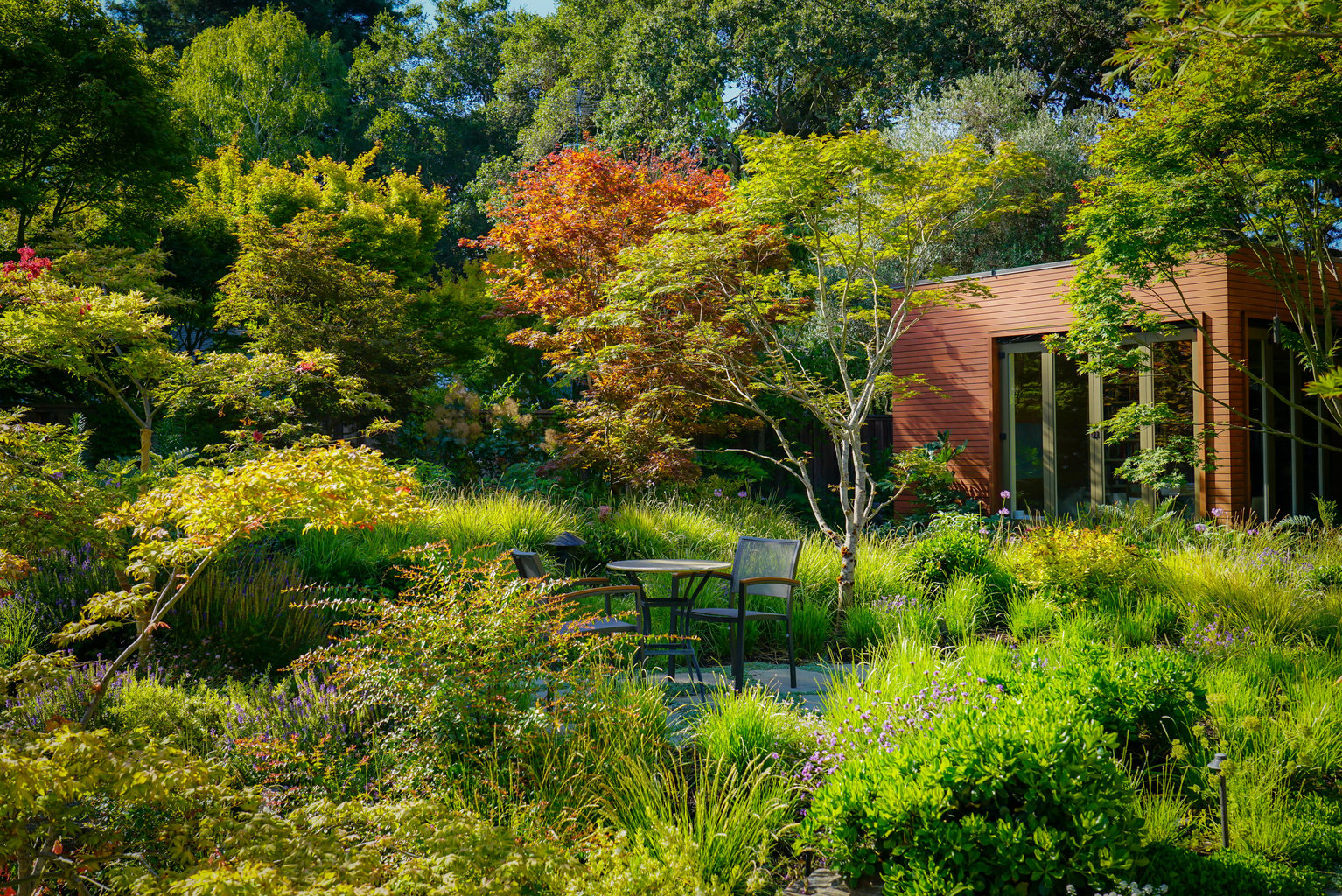
Seslerias: Versatile Groundcover Meadow Grasses
Summer 2022 Without question, the most beautiful and versatile of all the groundcover meadow grasses are the moor grasses (Sesleria). Moor grasses tick off all





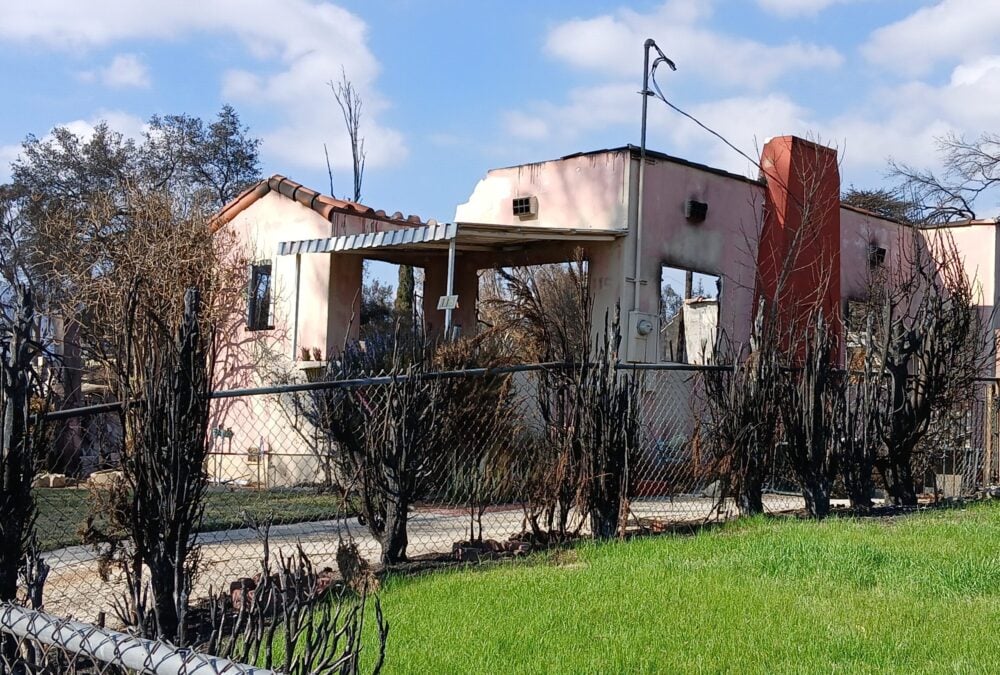
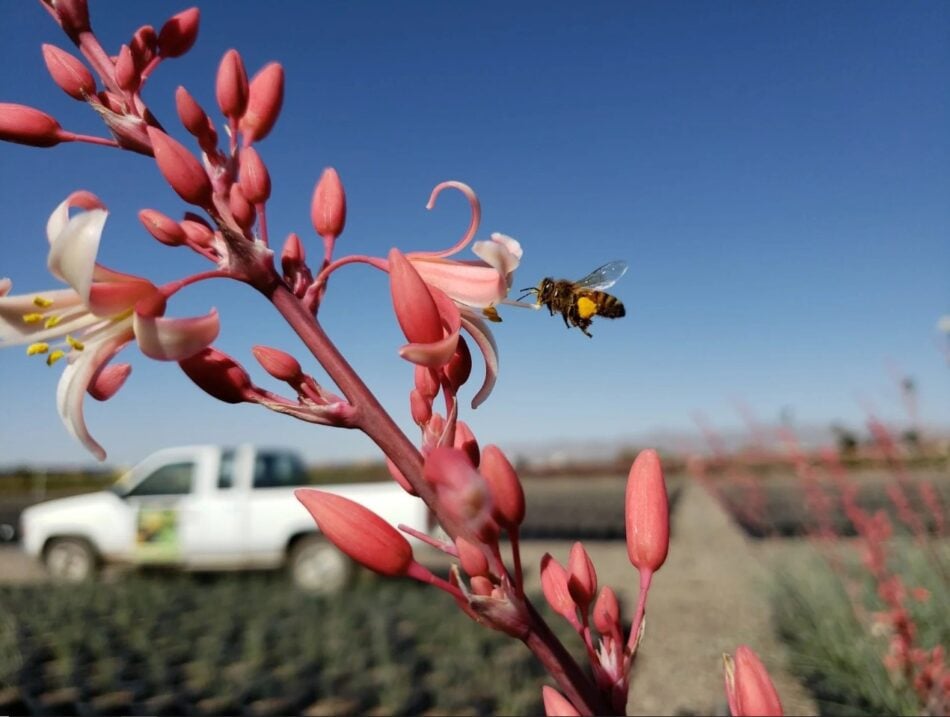



Responses